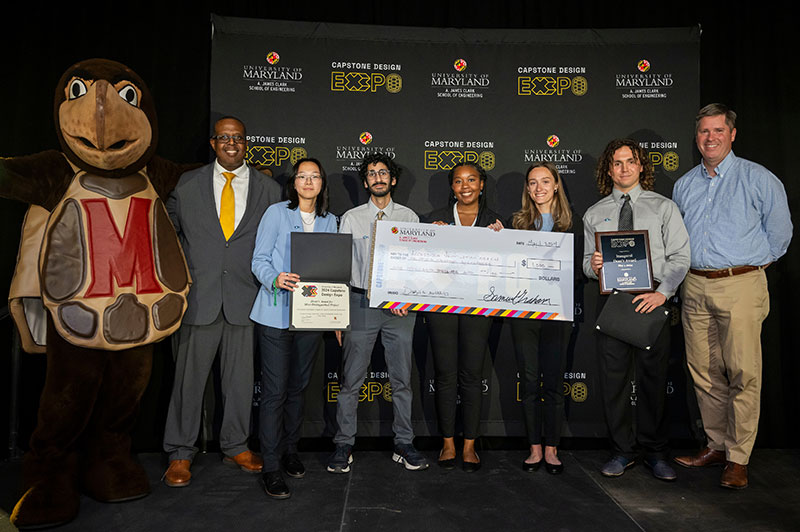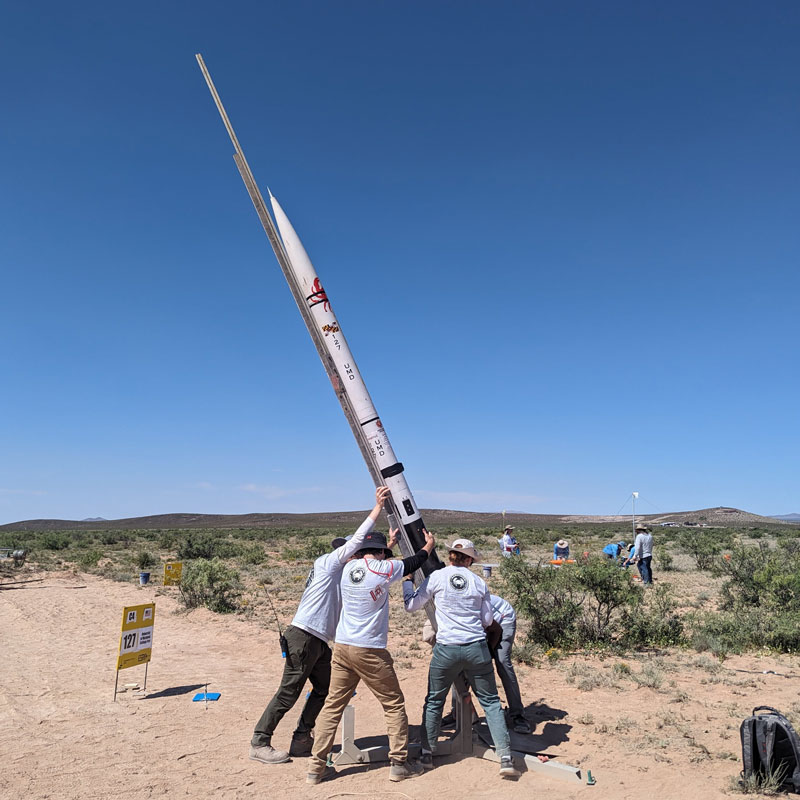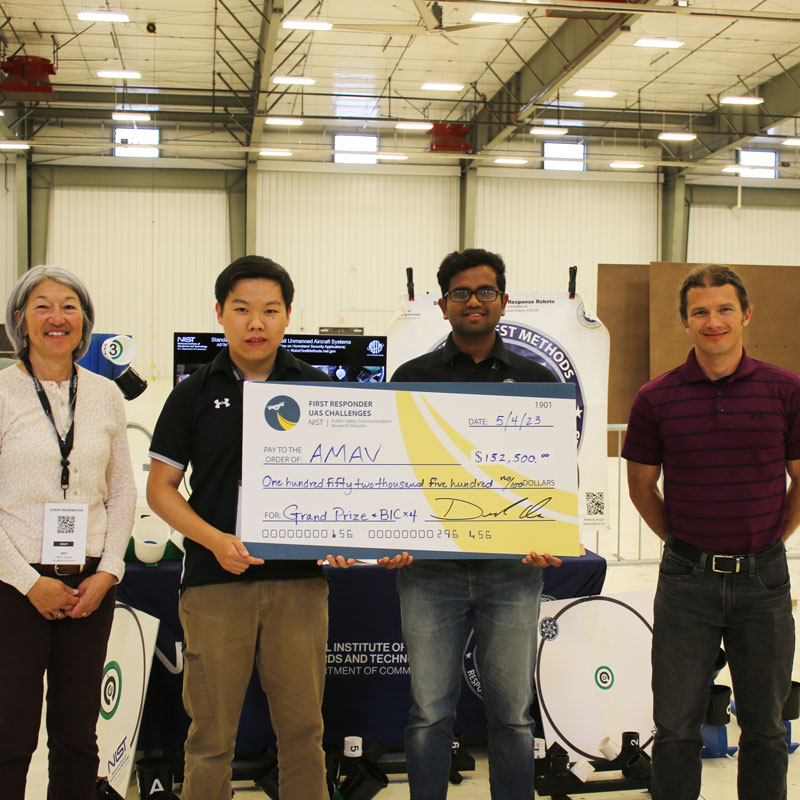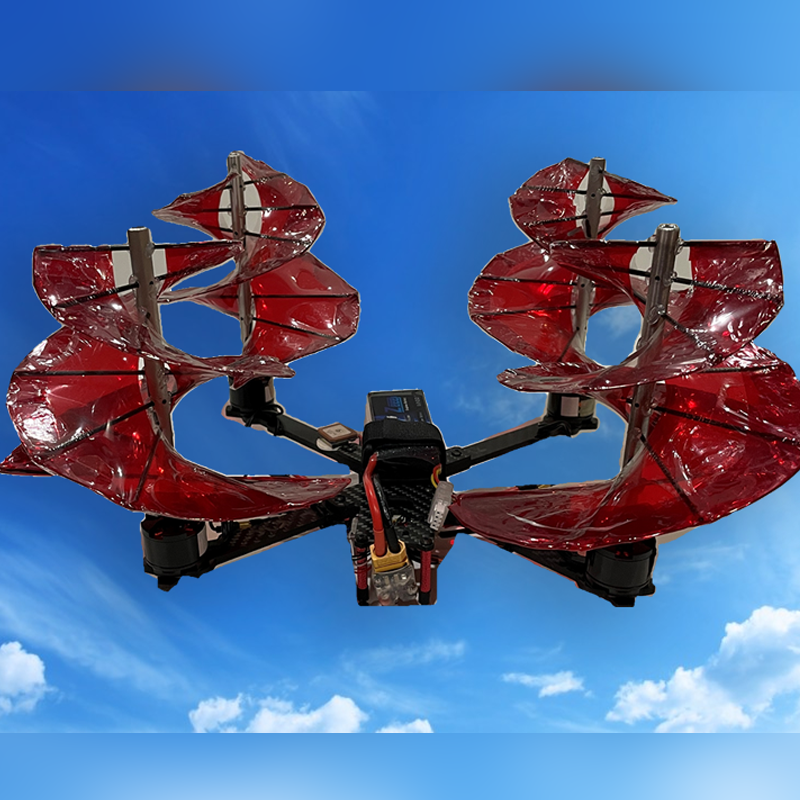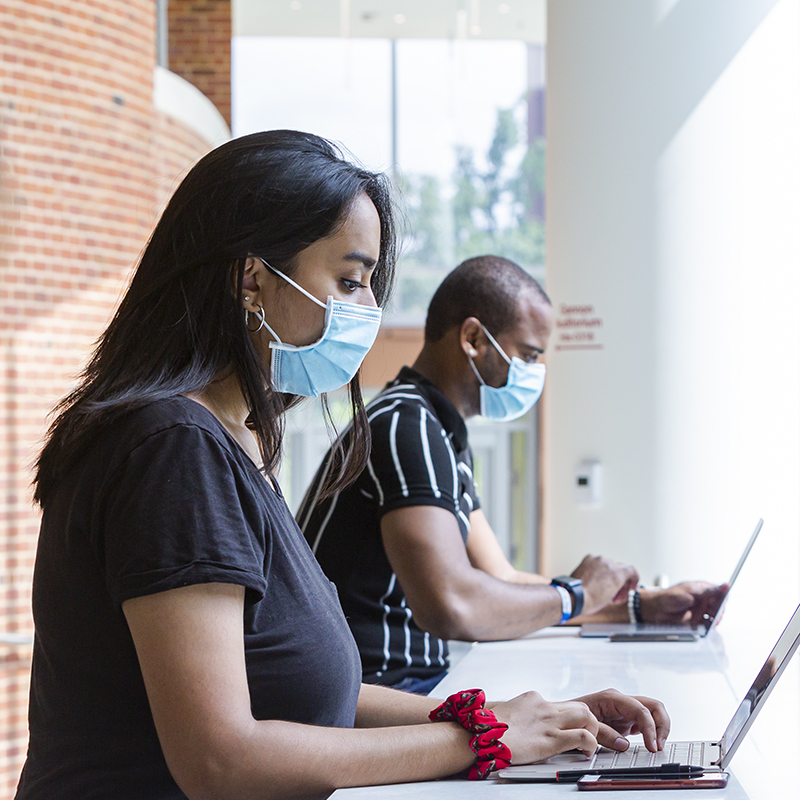News Story
Inside Alumni Cup
If you’ve ever seen The Goonies, Pee-wee’s Big Adventure—or the Alumni Cup Competition hosted at Maryland  Engineering, then you’ve witnessed a Rube Goldberg-inspired machine.
Engineering, then you’ve witnessed a Rube Goldberg-inspired machine.
Named for the 20th century American engineer and cartoonist with an eye for the absurd, Rube Goldberg machines are designed to perform a simple task in a complicated, and often wacky, way. Imagine 20 or more steps linked in a chain reaction to blow a horn or—in the case of the 13th annual Alumni Cup—to knock down 10 small bowling pins.
Building a Rube Goldberg-inspired machine is an exercise in failure, troubleshooting, and fun, making it the perfect project for student engineers. According to three-time Alumni Cup competitor—and this year’s bioengineering team captain—Chelsea Neumann ’25, the best part of Alumni Cup is “being with my team and bringing to competition a machine that showcases what we’re about, what our department is about,” she says. “And winning, of course!”
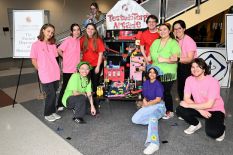
Alumni Cup teams representing the A. James Clark School of Engineering’s eight departments had two weeks and $100 to complete this year’s bowling-themed challenge sponsored by the Engineering Alumni Network. Capping off National Engineers Week and culminating in the February 23 competition, each team was judged on their machine’s effectiveness, presentation, and team spirit—while students, faculty, and staff cheered them on.
In the run-up to the this year’s Alumni Cup, we followed the bioengineering team for a behind-the-scenes look at the ups, downs, and lessons learned on the road to competition.
T-minus 12 days, and the bioengineering team is gelling, with returning members from the 2023 team and new faces too. A confident leader, team captain Neumann is in charge of structuring the team, deliverables, and overseeing the construction of the machine. They’re calling theirs an “arcade of the body,” combining this year’s bowling theme with the bioengineering discipline. “Circuity is our little niche,” she says. “This year we’re really leaning into implementing electronic components into our machine.”
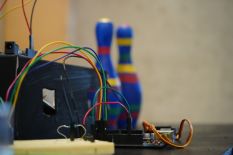
Five of the 20 (or more) required energy-transferring steps have been created and are arranged top–down in three tiers supported by a wooden supporting frame, or chassis. The team is recycling the chassis from years prior; with a limited budget, recycling is key. The problem? Over time, the chassis developed gaps, dents, and holes, which require much wood putty to create a level surface for the last few steps.
Then there’s the electronic component that threw off the design plan by an inch. So, back to the drawing board the team goes. “It’s all part of the engineering design process to test and go back, test and go back, to create a better machine—and come up with ideas for the next one,” Neumann says.
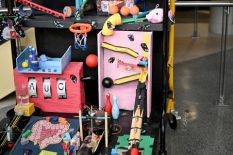
T-minus 3 days, with 10 steps down, the team has honed its arcade theme, implementing nostalgic references including pinball and Donkey Kong, along with multi-colored LED lights for atmosphere. Inspired by Terp Zone (a recreational facility located in the basement of Stamp Student Union)—and a group outing to Dave & Buster’s—the team is confident in their vision and execution. With only a few days until judging, they’re leaning into their individual strengths.
The mechanic of the team, Benjamin Oteri ’25 is laser-focused on the steps and challenge parameters: “We have seven pins knocked down now, saving three for the final step—an impressive spare.”
In the early 2000s, the Engineering Alumni Network board was looking to develop a student event to introduce students to the alum network they would join after graduation. Board members Kevin Schoonover ’06 and Liz Goldwasser ’03 decided to pit the Clark School’s eight departments against one another in a friendly Rube Goldberg-inspired competition:
“I made up the most diabolical rules,” Schoonover says of the design-and-build project. “We bought the largest trophy we could find, Liz made the trophy case, and now Alumni Cup is a tradition.”
The team artist, first-time Alumni Cup competitor Trixy Tran ’25, is at work on a large, colorful sign reading “Testudo Terp’s Arcade,” along with signs for spectators to hold. Other artistry includes bowling pins painted to look like chromosomes, DNA nucleotides, and the coronavirus.
T-minus two hours, and the eight teams are setting up their machines in the Jeong H. Kim Engineering Building rotunda. Most feel confident. Most also feel tired, with many team members enduring late nights preparing their machine and team for competition.
Among the eight teams, the steps include rolling pinballs, snapping rat traps, gears, fire and water elements, and a rocket launch. Team bioengineering has 22 steps in play, which they troubleshoot until the last possible moment.

The biggest challenge of the two weeks? “The time crunch and testing,” Neumann says. “You can make all your steps, but do they all work together, and do they work together consistently?”
T-minus 0, and it’s liftoff for the aerospace engineering team’s competition-winning entry, a space-themed “Bowlar System” contraption, which launches a photo of NASA astronaut Jeanette Epps M.S. ’94, Ph.D. ’00 to the machine’s version of the International Space Station. (Epps is set to blast off for a mission on the real ISS in early March.)
The bioengineering team places second and the chemical and biomolecular engineering team places third, also winning the People’s Choice Award (a new addition to the 2024 competition).
Happy with their second-place finish, the bioengineering team is already looking forward to next year. “Alumni Cup season is our favorite time of the year,” says team captain Neumann after the competition.
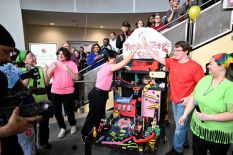
She reports that the team is brainstorming for 2025, which will be Neumann’s fourth and final Alumni Cup, and has lots of ideas, including plans for a new chassis for their machine.
“We plan to compete (and win) next year!”
But, first, naps.
Published February 29, 2024
